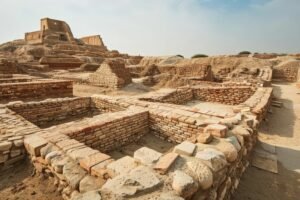The Epic of Gilgamesh stands as a monumental work in the annals of world literature. Hailing from ancient Mesopotamia, this epic poem not only provides insight into early human civilization but also offers timeless themes that resonate with readers across millennia. As the oldest surviving epic poem, it offers a window into the beliefs, values, and myths of one of the earliest known cultures. This article delves into the origins, themes, and significance of the Epic of Gilgamesh, exploring why it remains a cornerstone of literary and historical scholarship.
1. Origins and Discovery
The Epic of Gilgamesh dates back to the early 3rd millennium BCE and is attributed to the Sumerian civilization of ancient Mesopotamia. The poem is written in cuneiform script on twelve clay tablets, discovered in the library of Ashurbanipal in Nineveh, modern-day Iraq, during the 19th century. The texts were originally composed in the Akkadian language, which was the lingua franca of Mesopotamia at the time.
2. The Structure of the Epic
The epic is structured as a long narrative poem and is divided into twelve tablets, each recounting different episodes of Gilgamesh’s adventures. The central figure, Gilgamesh, is a historical king of Uruk who is depicted as a semi-divine hero. The narrative intertwines mythological elements with historical events, creating a rich tapestry of adventure, heroism, and existential reflection.
3. The Main Characters
- Gilgamesh: The protagonist, Gilgamesh, is a historical figure elevated to semi-divine status. He is portrayed as a powerful and ambitious king, initially oppressive to his people but later undergoing significant personal growth.
- Enkidu: Gilgamesh’s closest companion, created by the gods to be his equal. Enkidu’s friendship with Gilgamesh is central to the narrative, as their bond profoundly impacts both characters’ journeys.
- Shamhat: A temple prostitute who plays a crucial role in civilizing Enkidu and introducing him to human pleasures and culture.
- Utnapishtim: A figure reminiscent of Noah, Utnapishtim is the Mesopotamian version of the survivor of a great flood. His story is pivotal in Gilgamesh’s quest for immortality.
4. Key Themes and Motifs
- The Search for Immortality: One of the epic’s central themes is Gilgamesh’s quest for eternal life. After the death of Enkidu, Gilgamesh embarks on a journey to find Utnapishtim and learn the secret of immortality. This quest reflects deep existential concerns about the human condition and the inevitability of death.
- Friendship and Heroism: The bond between Gilgamesh and Enkidu highlights the importance of friendship and its transformative power. Their heroic exploits demonstrate the virtues and limitations of human endeavors.
- The Nature of Life and Death: The epic grapples with profound philosophical questions about life, death, and the nature of human existence. The story suggests that while immortality may be unattainable, a meaningful life can be achieved through lasting legacies and personal achievements.
- The Flood Myth: The story of the great flood, told by Utnapishtim, bears striking similarities to the Biblical account of Noah’s Ark. This shared motif underscores the cross-cultural themes of divine retribution and survival.
5. The Epic’s Influence and Legacy
The Epic of Gilgamesh has had a lasting impact on literature and culture. Its themes of heroism, friendship, and the search for meaning resonate across different eras and cultures. The epic has influenced numerous works of literature, including the Hebrew Bible and classical Greek epics. Its exploration of universal human concerns continues to captivate scholars and readers alike.
6. Modern Interpretations and Relevance
Contemporary interpretations of the Epic of Gilgamesh often focus on its relevance to modern issues. The poem’s exploration of human frailty, the quest for knowledge, and the nature of existence are themes that continue to be relevant today. Modern adaptations and retellings of the epic in literature, film, and other media highlight its enduring power and significance.
Conclusion
The Epic of Gilgamesh remains a cornerstone of ancient literature, offering a profound exploration of human nature, heroism, and the quest for immortality. As the oldest surviving epic poem, it provides invaluable insights into the values and beliefs of early Mesopotamian society. Its themes of friendship, existential struggle, and the search for meaning continue to resonate with readers, making it a timeless work that bridges the ancient and the modern.










